If you’ve ever wondered how the Indian tea in your teacup came to be, this is the guide for you. Covering the history of tea to the types of tea grown in India, I have written this guide to help my readers understand why I get so excited by sipping single origin teas from this part of the world!
From the malty Assam to muscatel notes of Darjeeling, there are some of the most vibrant and flavoursome teas grown in this country. Below, you can find out which regions to look for and my recommendations for teas to try.
P.S. India is the home of chai, so if you’re fond of the milky sweet and spiced black tea, keep reading to the end and use the Tea Review Index to search tea reviews by origin and ingredients.
How Tea in India Came to Be

In India, tea plants weren’t historically used to make tea on the scale we drink it now. In fact, it was ayurvedic herbs that were more commonly brewed and consumed as tea long before the Camellia sinensis plant was farmed across the country. Ayurvedic herbs and spices, like holy basil and cardamom, grow natively in India and were consumed for enjoyment and medicinal purposes.
As for the traditional tea plant that makes cups of black tea, green tea, white tea, and numerous other types, it was the British that cultivated it into the drink it is today.
The Assamica variety of Camellia sinensis grows natively in the Assam region of India, while the Sinensis variety originates in China. The British noticed that cultivating the thicker leaved Assam tea plants was easier than introducing Chinese tea plants in India. So, by 1820, the British East India Company was growing tea in Assam on a large scale.
Chinese tea bushes did, eventually, make it into India too. Many Darjeeling teas consumed today are from grown from the Chinese variety.
Tea drinking in India today is incredibly popular, and the country is the top tea producer in the entire world! Big brands including Tetley and Yorkshire Tea source all or part of their black tea from India to this day.
Tea Growing Regions in India
There are distinct regions in India that produce teas that are well-known around the world. I’ve focused on the regions that produce some of the most sought-after single origin teas here. I highly recommend exploring them if you are a teafanatic.
Darjeeling Tea
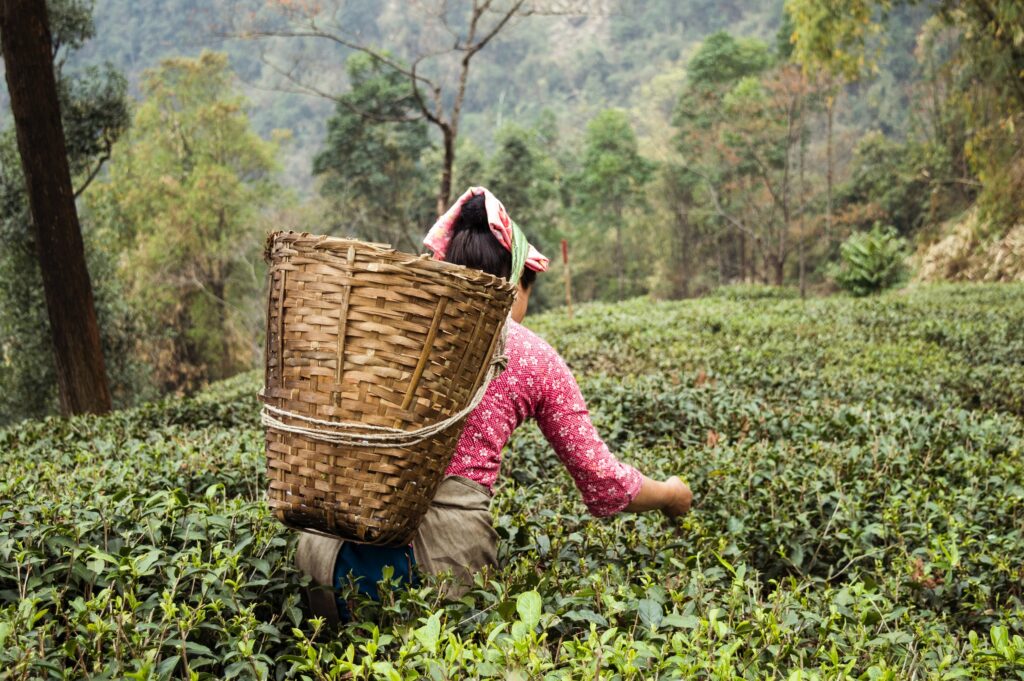
Darjeeling is a district in the West Bengal state of India. The category ‘Darjeeling tea’ is a registered geographical indication – like how champagne can only be named as such if it is produced in the Champagne region of France.
Green, white and oolong teas are produced in Darjeeling, but it’s the black tea produced here that’s renowned around the world. The tea is harvested in flushes, starting in March with the new leaves and buds and ending in November with the large leaves that have had time to mature.
The first flush of Darjeeling is light, floral and refreshing with intriguing muscatel notes. It is this distinct flavour that makes Darjeeling tea so famous. If you’d like to try Darjeeling tea, I have two recommendations:
- Hampstead Darjeeling Tea – a decent quality teabag version of the classic Darjeeling. It doesn’t hold a candle to loose leaf first flush, but it will give you an idea of what Darjeeling teas are all about.
- What-Cha Darjeeling Tea – What-Cha sources fine, loose leaf teas directly from farmers in India and across the world. Check regularly to see what is in stock.
Assam Tea
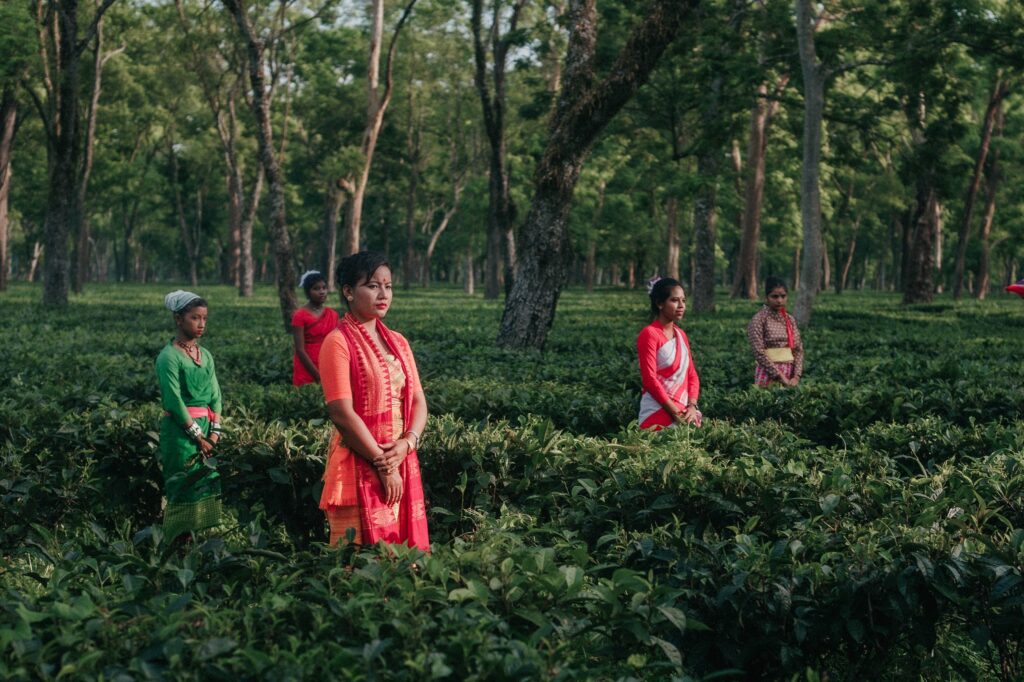
Assam tea is made from the Assamica variety of tea plant in the Assam state of India. Growing at or near sea level (rather than thousands of metres above, like most teas), these tea bushes are grown to produce black tea. This is tea that has been oxidised to deepen the flavour and turn the leaves black.
Assam teas are well-known for a delicious malty and brisk flavour that’s much bolder than typical Chinese black teas. However, when you combine Assam tea with Chinese Keemun and Kenyan black teas, you get the iconic English Breakfast.
I highly recommend drinking Assam tea with milk. If you choose a high-quality tea, you should find that it has enough natural sweetness to be consumed without sugar. My recommendations are:
- Assam Mancotta SFTGFOP-1 – a high-quality loose leaf Assam tea with curious notes of raspberry jam. This is one of my all-time favourites.
- Twinings Assam Tea – my teabag option is a classic from Twinings. Labelled ‘Strong and Malty’ it never fails to brew a strong and hearty cup of tea, though it lacks the depth and sweetness of loose leaf Assam.
Nilgiri Tea
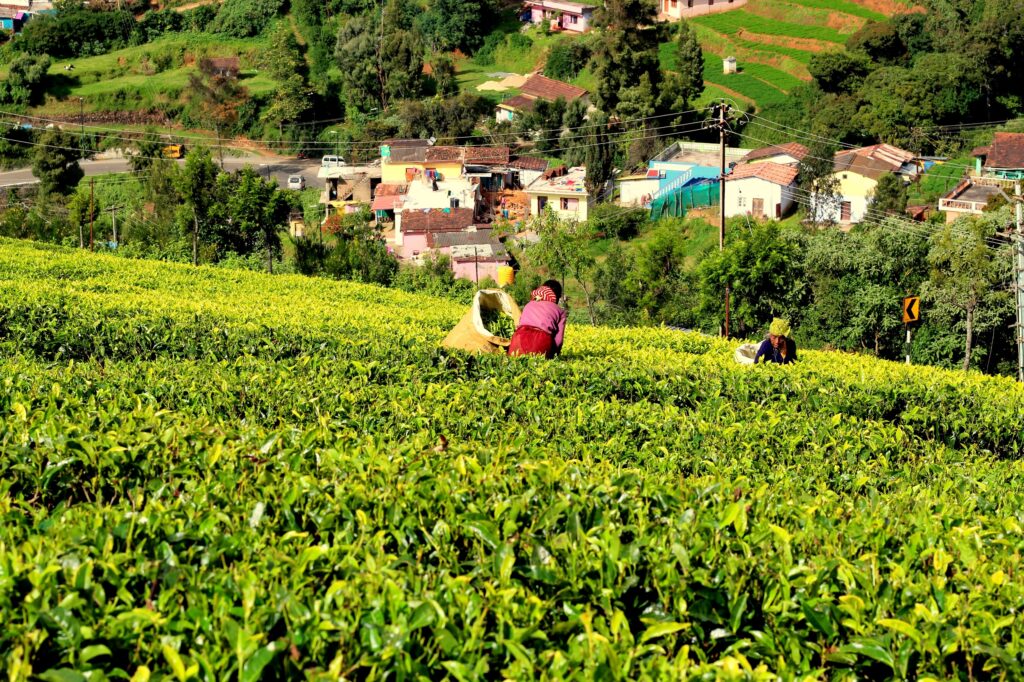
Also known as blue mountain tea, Nilgiri black tea is grown in the Nilgiri region of Tamil Nadu, India. Most of the tea grown here is processed with the crush-tear-curl (CTC) method to create tiny pellet-like leaves that are used in tea blends, teabags, and iced teas.
However, you can still find fine loose leaf tea grown in Nilgiri that isn’t earmarked for commercial tea companies. This black tea has a brisk, fragrant and full-bodied flavour.
With high elevations on the lush rolling hills, Nilgiri has the perfect climate and good drainage needed for the Sinensis variety of tea plant to thrive – you won’t find Assam tea grown here.
My recommendations for Nilgiri black tea are:
- BRUU Nice N Spicy Chai – a blend of Nilgiri black tea and chai spices. If this sounds good to you, check out the chai teas listed below.
- Vahdam Nilgiri Breakfast – this is a robust and flavoursome loose leaf tea sourced from Coonoor in the Nilgiri hills. It’s great hot or iced.
Other Tea Growing Regions
There are numerous other tea growing regions in India, mostly found in West Bengal, South India and Assam. As the Indian Tea Association list, there are also some smaller estates to be found in North India.
For a full list of tea growing regions, I recommend you check out their website. The three regions above are the most commonly consumed around the world, but India consumes a lot of tea domestically too – around 70% of all the tea grown in the country.
Popular Indian Black Teas
Tea culture in India is huge and goes back centuries, especially when you include ayurvedic blends in the tea category. Today, most black tea beverages are made by boiling the tea leaves with water, then again with milk and other ingredients (e.g. spices and sugar) to create a rich drink that we call chai.
The word ‘chai’ means tea. Here are four popular Indian teas. If you happen to visit India, you will find that each region (and even each street stall selling chai) has their own favourite blend of spices to make their tea unique.
Masala Chai
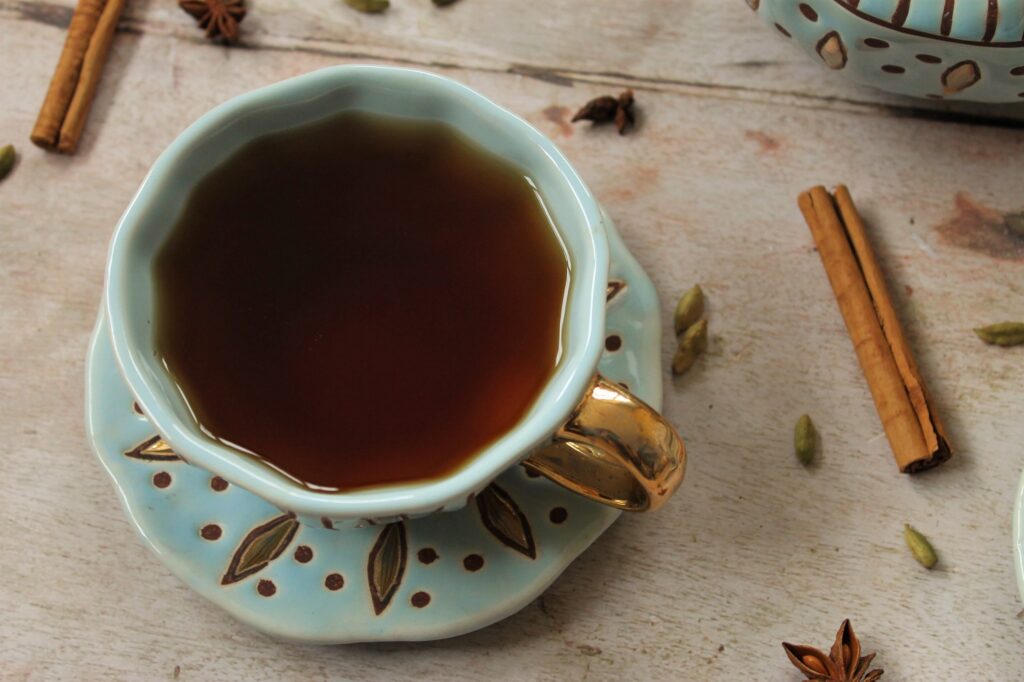
Black tea – from any region in India – is combined with a karha spice mix, sugar, milk and water. This is brought to a boil in the stove and simmered until you have a rich, creamy, sweet and spiced drink. Traditionally, using ginger and cardamom as the main spices and a ratio of 1:4 water to milk will create a delicious chai.
I like the flavour of cinnamon in my chai, so I opt for more cinnamon-heavy spice mixes. If you are making chai yourself at home, I recommend crushing whole spices and toasting them with Assam tea leaves before simmering in the milk of your choice – I use soy.
Check out my Best Masala Chai List for ready made chai mixes. All you need to do is brew a spoonful in water or milk and strain.
Milk Tea
Milk tea refers to the standard cuppa we drink in Britain. It’s a black tea, brewed in water, with a good splash of milk added for creaminess. Due to many countries (including India) consuming tea regularly without milk, the term ‘milk tea’ is used to differentiate.
For a normal tea in the UK, I usually recommend an English Breakfast blend from my Best English Breakfast Tea List.
Noon Chai
Sometimes called Kashmiri tea, Noon Chai is a popular chai blend consumed in numerous areas of India. Unlike most chai drinks, it is made with gunpowder green tea rather than black tea leaves. These green tea pellets are brewed with milk, salt and bicarbonate of soda (baking soda) – the ‘noon’ refers to the salt.
The combination of salt, bicarb and tea creates a pink colour! The flavour is rich, thick, creamy tea with a touch of salt. It’s an acquired taste, but you can make it with sugar instead of salt if you’d prefer.
Butter Chai
Brew tea leaves, butter, water and salt together to make butter chai. Although this beverage is most popular in Tibet and Nepal, it is also consumed in India around the Himalayas. Traditionally it is made with pu-erh tea rather than black tea.
This one is high on my list of Indian tea beverages to try!
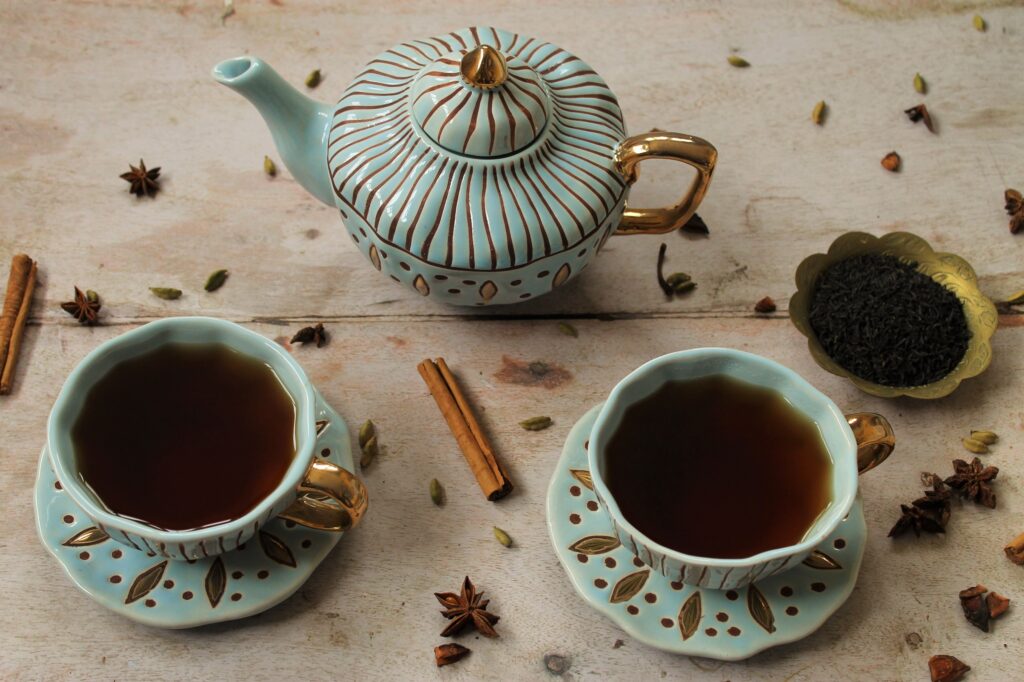
FAQs
In India, tea is called ‘chai’ and ‘masala’ refers to spiced. So ‘masala chai’ simply means spiced tea.
Chai is popular in India – black tea brewed with milk, sugar and arranged spices. Other tea types, including green tea, are growing in popularity too. Some areas of India also enjoy coffee more than tea.
Tata Tea is one of the most widely consumed tea brands in India.
Assam is the state in India that is most well-known as the Tea Garden of India, as it is the home of the Assamica variety of the tea plant. West Bengal and Tamil Nadu are also strong tea-producing states in India.
Depending on your tastes, Darjeeling or Assam are the regions that produce some of the finest teas in all of India.
According to the Indian Tea Association, Assam produces the most tea in India at around 507 million kg per year.
